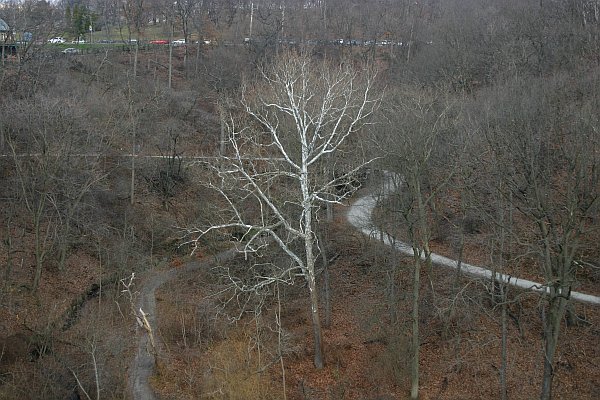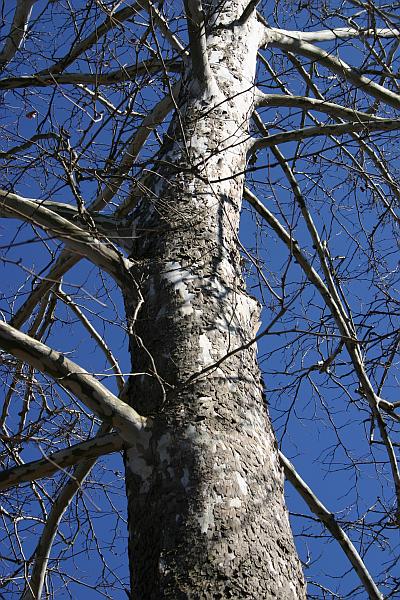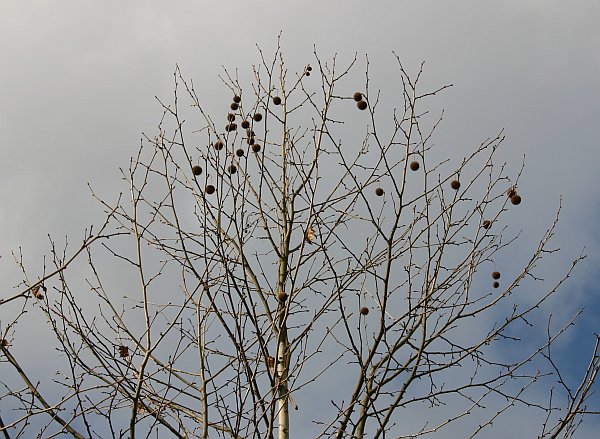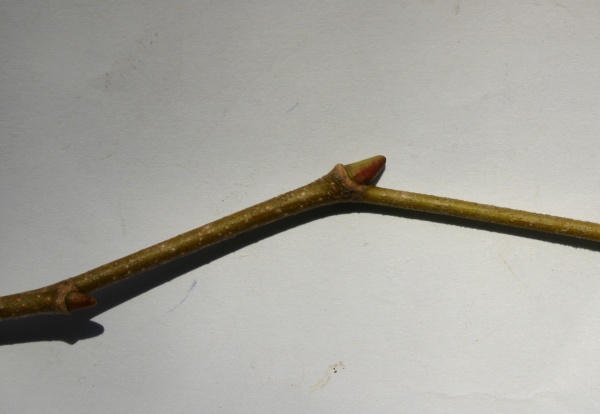
15 February 2012
From a distance this massive white tree looks like a ghost in the valley.
It’s an American sycamore (Platanus occidentalis), also called buttonwood or American planetree. In Pittsburgh we call it a sycamore but in other countries this name can be confusing because it refers to other trees. In Europe the “sycamore” is a maple.
American sycamores are native to eastern North America from Maine to Texas, from Ontario to Florida. You’ll find them along creeks and rivers, in bottom land but not in swamps. They like to be near water, but not in it, because they’ll die if their roots are submerged continuously during the growing season.
Sycamores are easily identified by their bark which flakes off in big chunks to reveal the pale new bark beneath. They do this because their bark cannot expand as the tree grows. Look up the tree trunk and you’ll see the characteristic ghostly white color.
In rural settings you can safely identify the flaky bark as a sycamore but in town we’ve planted London planetrees, a hybrid of the American sycamore and Oriental plane tree. The new bark on London planetrees is greenish-beige where the sycamore is white.
The seed balls of both species stay on the tree through the winter, breaking up in early spring. Each seed has a bit of fluff attached to help it disperse by wind or water.
One way to tell the difference between American sycamores and London planetrees is to look at the seed ball stems. On sycamores there is generally one seed ball per stem. On London planetrees two or three hang from the same stem.
Sycamore twigs zigzag from bud to bud. The buds form underneath the petioles (leaf stems) during the growing season and don’t appear until the leaves fall off. Each bud is encased in a single scale and surrounded by the leaf scar.
Sycamores (and London planetrees) are both noted for their very large trunks which often become hollow with age. Champion trees have been measured at 167 feet tall with trunks 13 feet in diameter. The oldest trees are the largest. They can live for several hundred years.
(photos by Kate St. John)
Reminder: Meet me at Schenley Park Cafe & Visitors’ Center at 1:00pm this Saturday for a Winter Tree Walk to practice your winter tree identification skills. So far the weather looks good (above freezing with no precipitation!). Click here for more information.
p.s. The tree pictured at top was cut down in July 2023.
I love sycamores…there is something really beautiful about seeing the stark white trunk and branches in the winter, standing out in contrast to the gray-brown of most other trees. There are some huge stands of sycamore trees along I-79 north of Washington PA, and in my woodland wanderings I’ve come across some massive individual trees that must be a couple of hundred years old….some very impressive specimens grow in Boyce Mayview park in Upper St. Clair along the Chartiers Creek floodplain. If you want to contrast the American sycamore and London planetree, if I remember correctly, along Allegheny River Boulevard you can see planetrees lining the road where they were planted, and native sycamores grow along the river bank below them.
On thing I would like to know, planetrees often develop lumpy trunk as they age…they look like tumors are growing all over them. The native sycamores don’t do this, at least I’ve never seen it. I was wondering if anyone knows why the planetrees get lumpy.
One of my favorite trees — their white bark shines beautifully in the sunlight — great post — barbara
I have a question. My husband planted a sycamore seed in the spring. It was actually just to see if anything would come up. Right now we do have a small sapling with a couple of leaves on it. It is now almost August. Will the plant amount to anything because we didn’t really follow protocol on when it should be planted? It was done out of curiosity. If it does continue to grow do we bring it in for winter?
In nature seeds sprout whenever the conditions are right no matter the exact time of year. The sapling is fine outdoors and is following its own schedule.